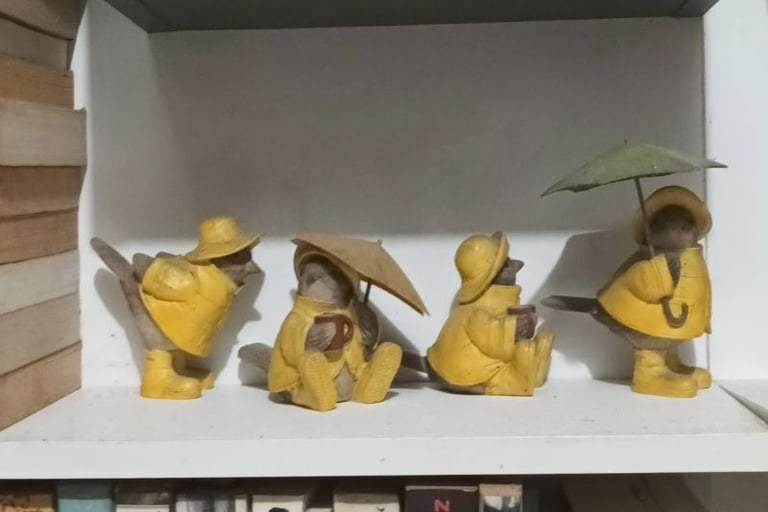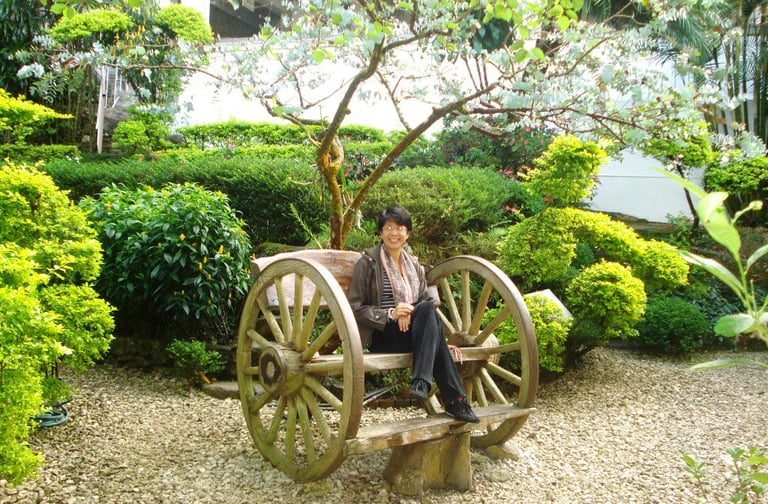Crafting Personal Essays from Filipino Family Life
WRITER AT WORDHOUSERITEME


Writing Home into our Filipino Story
When was the last time you came home? How did it feel? Did you sense belonging, or did you feel displaced? Sometimes our stories circle these questions. We can be home yet feel isolated. We can be far away yet still yearn for home. We may have long been uprooted and still be searching for an anchor, for the memory of our ancestors.
In the classic Filipino novel, America Is in the Heart, Carlos Bulosan shows remembering as a way of enduring. In America, his memories of boyhood in Pangasinan keep him alive. In a Filipino contemporary novel America Is Not the Heart, Elaine Castillo weaves Ilocano into the narrative, using language as a way to go back despite the trauma.
Our story can show how home stays with us wherever we have been. Images from childhood or later life remind us that we belong to a local culture with its flaws and delights. Yet never only about the self, our personal stories carry the weight of many islands. Writing our story is a way of reflection, a search for identity and belonging.
A Day In an Ordinary Filipino Life
Look outside your window. Do you sometimes long for something from the past? In our Barangay back home, I remember an eskinita that hosted at least three sari-sari stores every four houses. We bought anything from thumbtacks to sacks of rice in those home stores. Each one seemed to thrive as we patronized them: Ka Dante, Aling Tess, Biboy—we called them by the names of those who owned them, because they had always anticipated and supplied our everyday needs.
The landscape in the city has changed. Sprawling malls or massive tiangge markets, and now condo complexes with delivery hubs erased most sari-sari. Some have turned into vaping stops or sold occasional prepaid cards. Back then, benches in front of the stores were gathering spots for the latest barangay updates. But dwarfed by giant complexes fire walls now keep the neighbors segregated.
We write about each day in our Filipino life story as we recall similar sites of community bonding: market alleys, jeepney rides, lupakan, playing piko, school field trips, the yearly field day when children danced in Filipiniana, the town fiestas, eating taho, sing-along karaoke, beach outings, student rallies. Local and particular, they give our day in a life story its hues and texture.
The Filipino in Diaspora
And what of those abroad? On the map, the equator and meridian are only lines. But as we cross distances of both space and place: from province to city, from metropolis to isolation, from island to island—our adjustments have been catastrophic to our families. Separation has meant birthdays missed, children growing up with only voices over the phone, parents aging without our hands to steady them.
Our hybrid representations may have confused our orientation, giving us a fractured sense of self. We speak in borrowed tongues, carry foreign habits, yet still crave the warmth of sinigang or the comfort of adobo. We see the Philippine flag flying overhead and, though certain of our origins, we cannot deny the tinge of hurt it brings. Yet homesickness can also be the thread that helps us stitch together the pieces as we write and rewrite our story.
What is home, and how do we carry it with us across oceans, airports, and the long silences between calls? Whether we write of leaving, of returning, or of still searching, we will keep the same question pulsing so we remain seen, remembered, and identified as a people, marked by our distinct ordinariness.
We Inhabit our Language
What do we mean when we say inaagosto? In August, rains keep PAG-ASA meteorologists on edge, wary of blame should floods catch people unprepared. Yet inaagosto has grown to mean more: the heaviness we carry under corrupt officials.
For us, bagyo is no longer just a weather disturbance. It has become a symbol of hardship, of a nation tested again and again by storms both natural and political.
Our idioms may be resilient, but we must break free from the meanings we have grown used to inhabiting: kinawawa, sinalvage, kinuyog, binaboy, kulelat. Recovery asks us to live out new concepts of relation: kapamilya, kapwa, kakosa, kabarkada, kapatiran. Even if life feels like one long bagyo, we can endure with others, and move forward together. But we must go beyond a flawed concept of us, place, and home.
Think of September 21. For Filipinos, it cannot be forgotten. It marks the declaration of Martial Law, twenty long years of repression. Students once filled the streets with banners shouting, “Marcos, Hitler, diktador, tuta!” Today, the latest angry call is “Mga kurakot, ikulong na ’yan!” a demand to hold plundering officials accountable. We record these chants as we feel the injustice of the present. Our essays, like marches on the page, remind us not only of dissatisfaction but also of hope, of resistance, of our power to imagine a better nation.




